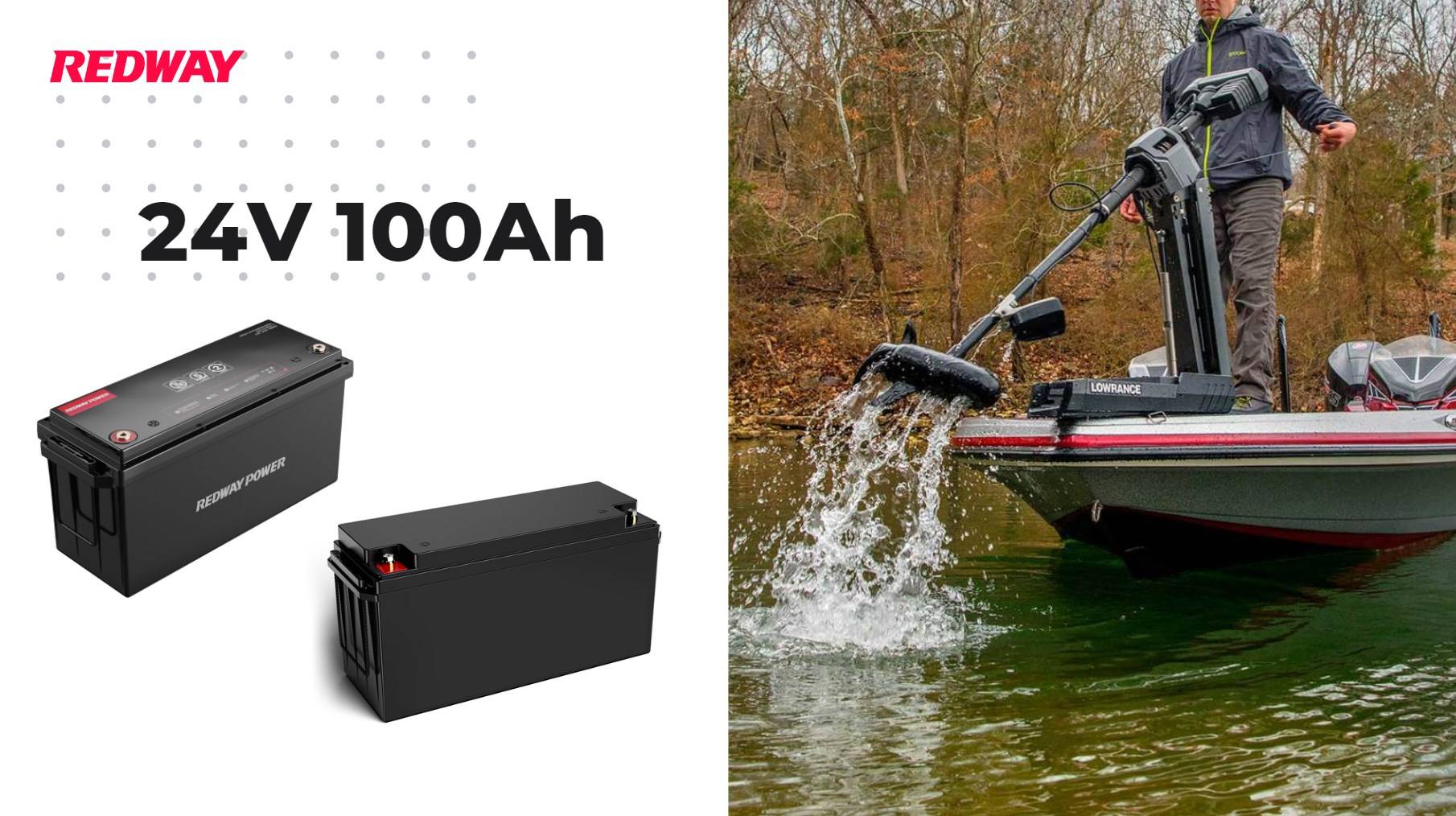
Blog
What Are the Benefits of a 24V Lithium Trolling Motor Battery?

A 24V lithium trolling motor battery offers numerous advantages, including longer lifespan, faster charging times, and lightweight design, making it an ideal choice for anglers and boaters seeking reliable power without the drawbacks of traditional lead-acid batteries.
What Are the Key Advantages of Using a 24V Lithium Trolling Motor Battery?
The key advantages of using a 24V lithium trolling motor battery include:
- Lightweight Design: These batteries are significantly lighter than lead-acid counterparts, often weighing up to 70% less, which enhances boat performance and fuel efficiency.
- Longer Lifespan: With lifespans exceeding ten years and up to 5,000 charge cycles, lithium batteries reduce the frequency of replacements.
- Fast Charging: They can recharge in as little as two hours, minimizing downtime and allowing more time on the water.
- Consistent Power Output: Unlike lead-acid batteries that diminish in voltage as they discharge, lithium batteries maintain stable voltage throughout their usage.
Chart: Comparison of Key Advantages
| Advantage | Lead-Acid | Lithium |
|---|---|---|
| Weight | Heavy (50-75 lbs) | Lightweight (20-30 lbs) |
| Lifespan | 300-500 cycles | Up to 5,000 cycles |
| Charging Time | 8-12 hours | 2-4 hours |
| Voltage Consistency | Drops during discharge | Maintains steady output |
These features make lithium batteries particularly appealing for marine applications.
How Does the Lifespan of a 24V Lithium Trolling Motor Battery Compare to Other Types?
The lifespan of a 24V lithium trolling motor battery is significantly longer than that of traditional lead-acid batteries. While lead-acid batteries typically last around three to five years with about 300-500 charge cycles, lithium batteries can last over ten years with proper care.Chart: Lifespan Comparison
| Type | Average Lifespan (Years) | Charge Cycles |
|---|---|---|
| Lead-Acid | 3-5 | 300-500 |
| Lithium | 10+ | Up to 5,000 |
This extended lifespan translates into cost savings over time due to fewer replacements.
What Makes Lithium Trolling Motor Batteries More Efficient Than Lead-Acid Batteries?
Lithium trolling motor batteries are more efficient than lead-acid batteries due to their higher energy density and ability to deliver nearly all stored energy without significant voltage drop-off during use. This efficiency ensures that you can maximize your time on the water without worrying about battery performance.Chart: Energy Efficiency
| Type | Energy Density (Wh/kg) | Efficiency (%) |
|---|---|---|
| Lead-Acid | 30-50 | ~80 |
| Lithium | 150-200 | ~95 |
This efficiency not only enhances performance but also reduces the overall energy consumption during operation.
How Do Temperature and Environment Impact Lithium Battery Performance?
Temperature can significantly impact lithium battery performance; extreme cold may reduce capacity temporarily, while high temperatures can increase self-discharge rates and potentially damage internal components. Ideally, these batteries should be used within recommended temperature ranges (typically -20°C to +60°C) for optimal performance.Chart: Temperature Effects on Performance
| Temperature Range (°C) | Effect on Performance |
|---|---|
| -20 to 0 | Reduced capacity |
| 0 to 40 | Optimal performance |
| Above 40 | Increased risk of damage |
Maintaining an appropriate environment is crucial for ensuring long-term battery health.
Can You Use a 24V Lithium Battery for Other Marine Applications?
Yes, a 24V lithium battery can be utilized in various marine applications beyond trolling motors, including powering electric anchors, fish finders, lights, and other onboard electronics due to its lightweight design and efficient power delivery.
What Are the Cost Implications of Switching to a Lithium Trolling Motor Battery?
While the initial investment in a lithium trolling motor battery may be higher compared to lead-acid options, the long-term savings from reduced replacements and maintenance costs make it financially advantageous over time. Additionally, faster charging capabilities can lower overall electricity costs.Chart: Cost Analysis Over Time
| Type | Initial Cost ($) | Replacement Frequency | Total Cost Over Time ($) |
|---|---|---|---|
| Lead-Acid | $200-$300 | Every 3-5 years | $600-$1,200 |
| Lithium | $800-$1,200 | Every 10+ years | $800-$1,200 |
Investing in quality now can result in significant savings down the line.
Expert Views
“Switching to a lithium trolling motor battery is not just about performance; it’s an investment in reliability and efficiency,” states an expert in marine battery technology. “With their lightweight design and long lifespan, these batteries allow anglers to focus on their fishing experience rather than worrying about power issues.”
FAQ Section
- Why should I choose a lithium trolling motor battery over lead-acid?
Lithium batteries offer longer lifespans, faster charging times, consistent power output, and are significantly lighter than lead-acid options. - How long does it take to charge a lithium trolling motor battery?
A lithium trolling motor battery can typically be charged in as little as two hours depending on the charger used. - Are there any special maintenance requirements for lithium batteries?
Lithium batteries require minimal maintenance compared to lead-acid batteries; however, they should be stored in appropriate conditions away from extreme temperatures.



